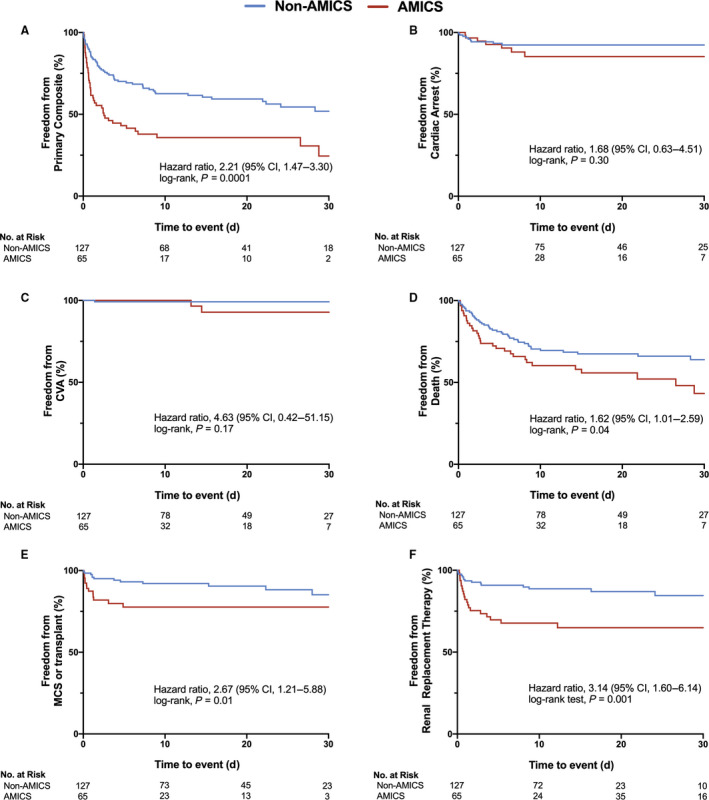Figure 2. Kaplan‒Meier estimates in patients with acute myocardial infarction complicated by cardiogenic shock (AMICS) vs non‐AMICS by primary and secondary end points.

A, AMICS was associated with increased rates of primary composite end point (hazard ratio [HR], 2.21; 95% CI, 1.47–3.30; P=0.0001). B, No differences in rates of cardiac arrest was observed with AMICS vs non‐AMICS (HR, 1.68; 95% CI, 0.63–4.51; P=0.30). C, No differences in rates of CVA was observed with AMICS vs non‐AMICS (HR, 4.63; 95% CI, 0.42–51.15; P=0.21). D, AMICS was associated with increased rates of 30‐day all‐cause mortality (HR, 1.62; 95% CI, 1.01–2.59; P=0.04). E, AMICS was associated with increased rates of need for mechanical circulatory support or cardiac transplant (HR, 2.67; 95% CI, 1.21–5.88; P=0.01). F, AMICS was associated with increased initiation of renal replacement therapy (HR, 3.14; 95% CI, 1.60–6.14; P=0.001). Comparisons were made by log‐rank test and hazard ratios were evaluated using the Cox proportional hazards model. P<0.05 is considered statistically significant. AMICS indicates acute myocardial infarction complicated by cardiogenic shock; CVA, cerebrovascular accident; and MCS, mechanical circulatory support.
